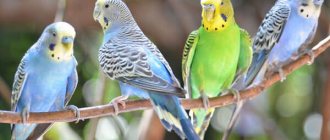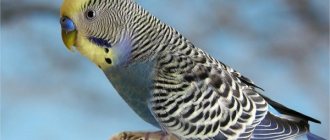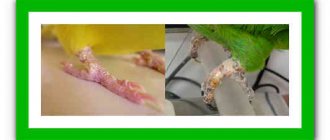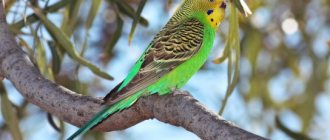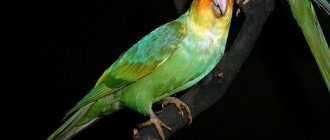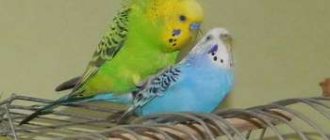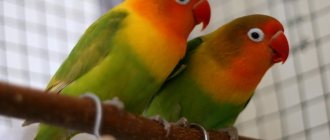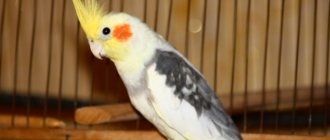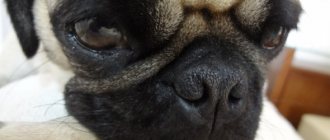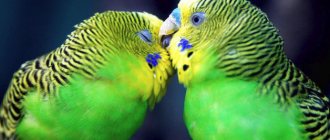In veterinary practice, we often encounter lameness in dogs. Very often it touches the pet's front paws.
Owners usually come to the clinic with complaints about their animals' shortened stride, tucking in their paws and falling on one side (right or left) - all these are manifestations of the same problem: lameness on the front paw.
It occurs when pain appears in this area, which is why the dog in every possible way avoids putting stress on the injured limb. However, you should not think that the cause of this disease can only be injury, because this is only one of the options. In fact, there may be many more reasons that provoked the painful condition.
Why is the dog limping?
In order to identify the cause, you should carefully examine the pet and observe its behavior. What will it give? You will receive valuable information about the presence or absence of external damage, and will be able to determine the location of pain.
So, a dog can limp for several reasons:
- Damage to fingers and feet (one of the most common causes).
- Splinter in the balls of the feet or between the toes.
- Reptile or insect bites (usually wasps, tarantulas, snakes)
- Ticks (in spring, pets often suffer from their bites)
- Muscle strain or joint dislocation.
- Bone fracture.
- Ligamentous dysplasia (occurs in large breed dogs).
- Secondary osteoarthritis.
- Chondroid metaplasia of intervertebral discs.
- Syringomyelia.
How to treat lameness in a dog with visible damage
A thorough examination, observation of the animal’s behavior and careful palpation (feeling) of the paw will allow you to determine how to proceed. In most cases, the animal owner can cope on his own.
Minor damage to the paw
Small cuts, wounds or scrapes often appear during walks in nature. If you find such skin damage, it is enough to treat it with hydrogen peroxide. This will neutralize bacteria that have entered the wound and speed up healing.
Splinter
If a splinter gets deep into the soft tissue, it may well cause pain and lameness in the animal. In some cases, a splinter can cause minor inflammation
, then you will see redness in the area of the skin puncture. The splinter is removed using tweezers, having previously treated the affected area with alcohol. If the splinter is located deep and you cannot remove it on your own, it makes sense to go to the veterinary clinic.
A bite of an insect
If you are sure that the cause of your dog’s poor health is an insect bite, you can treat the area with a mixture of water and soda (10:1)
. The following symptoms will allow you to verify this: slight swelling of the paw and inflammation. If your dog is bitten by a snake or tarantula, prompt contact with a specialist is imperative.
Ticks
Sprained joint or sprained ligament
Does your dog whine, won’t step on your paw, and react painfully to touch? It is possible that your pet has a sprain or dislocation, especially if you notice deformation in the joint area and swelling of the tissues. This often happens during long runs or jumps. To alleviate the condition, the injured limb can be secured with a tight bandage and ice applied. It is highly advisable to seek professional help.
Fracture
If the paw is broken, the dog does not step on the paw at all and does not allow him to touch it. The best thing you can do is take him to a clinic for treatment.
What to do if there is no visible damage due to lameness
It is much more difficult to identify the cause of a pet’s illness if no damage was found on the paw. This may indicate serious diseases of the animal, associated not only with the musculoskeletal system, but also with the nervous system. In this case, only a veterinarian can identify the cause after a thorough diagnosis.
Carefully selected therapy, compliance with recommendations and ensuring rest usually lead to a positive result quite quickly. Before going to the clinic, your task is to calm the dog down and provide him with the most gentle treatment possible.
Having studied all the possible causes of a dog's front leg lameness, you probably already realized that any of them is quite serious. You should not ignore this behavior of your pet, because it can lead to serious consequences (for example, improper healing of a bone during a fracture).
Bird species: Budgerigar
Age:
3 years
Gender:
Female
How long have you had the bird?:
2.5 years
How long ago did it get sick?:
Noticed today
If it has already been treated, then with what - in detail:
No
Have you done any tests or seen a doctor?
If contacted, then to whom (clinic, surname):: No
Symptoms:: It hurts, I think, for the bird to step on its paw.
Constantly sits on the right one, pressing the left one. If you place a bird on your finger, the affected paw will not squeeze it. It seemed to me that the bird’s sore paw had a slightly different color. There are small rednesses, but not on the sole Has the litter changed?: I don’t know
Photo of the litter: Was there vomiting?:
No
What do you attribute the onset of the disease to (change of food, caught a cold, hurt yourself, ate something suspicious, etc.) ?: I think I hurt myself.
I left for school in the morning, everything was fine. The bird was in the cage all day, I don’t think it was possible to get a serious bruise in the cage. How much does a bird eat per day? Is your appetite good? Bird activity level: active/decreased activity/lethargy: Activity is currently decreasing.
Appetite... good, I think. He eats 1 feeder per day, i.e. 2 teaspoons What is the fatness of the bird at the time of treatment, how many piles of droppings does it produce in 1-2 hours?: If I understand correctly what fatness is.
The bird is thin, I think there is a little underweight. I can’t keep an eye on the piles of droppings, because I have several birds and there is nowhere to put others. Was there a change in food in the period before the onset of symptoms of the disease?: No
If the food was not changed, how long ago did you open a new pack of food?:
A month ago
If any suspicion of poisoning, then what indoor plants did he have access to?:
No suspicion
Could the bird have swallowed a small inedible object or gnawed on materials not intended for this?:
No
Were aerosols and chemicals sprayed in the room?
Floor/carpet cleaners etc? Fumigator? Iron with Teflon coating: No
Is there smoking in the room where the birds live?:
No
Was there any smell of paint, gas or other strong odors?
Have there been any repairs (dust, primers, etc.)?: No
Doesn't a bird live in the kitchen?:
No, a bird doesn't live in the kitchen
If a bird lives in the kitchen, do you use non-stick cookware?:
Birds don't live in the kitchen lives and is not used
If the bird lives in the kitchen, did the food burn in the presence of the bird?:
not burn
? Are there any negative factors (drafts, humidity or dry air, poor lighting, stressful situations, etc.)?: I don’t think so the bird is often stressed.
She is afraid if I pick her up to treat her. There are small marks on her other leg (not the one she is pressing) so I apply Traumeel. What kind of grain mixture does the bird eat? Please indicate the NAME of the grain mixture. If the mixture does not have a name (weighed), then the composition: Prestige Versele Laga
Tell us in detail what is included in the diet in addition to the grain mixture:
Sometimes I give apples and carrots
Do you give Trill, do you treat the bird with food from your table, if you do? , then which one and how often?:
No
What vitamin supplements does the bird receive and in what dosages?:
I don’t give vitamins
What vitamin supplements do you give and does the bird consume them?
Mineral stone, sepia, crushed oyster shells, liquid mineral fertilizer?: Mineral stone
What kind of water do you give and how often do you change the water in the drinking bowl?
Specify the type of water: tap, filtered, boiled, purchased (name): Filtered water.
Sometimes I change it every 2 days, sometimes every day. Have any new birds appeared in the house in the last two months?
If yes, then more about this.: No
Is the bird kept alone, in a pair, in a flock?
If there is another bird(s), how is it/them feeling?: In a flock.
There are 2 more birds. Feeling good, chirping Is the bird in direct contact with rodents?:
No
Does the bird’s beak outgrow?:
Doesn’t it outgrow
Are there any problems with the plumage: permanent molting, unfurled or deformed feathers, disheveled and brittle plumage?:
Normal plumage, bright
Lifestyle: lives constantly in a cage, walks under supervision every day, is on free grazing all day without supervision:
Walks under supervision every day
City:
Kiev
Describe the symptoms of the illness in detail and tell us about everything that may be related to your bird’s illness.: Birdie does not squeeze exactly the fingers. He moves his paw itself, but his fingers are not mobile. He sits in one place and that’s it. I tried to eat, but I didn’t eat enough grains. I moved the feeder, water bowl and mine stone to the perch on which the bird is sitting. When he steps on the patient's paw, it begins to squeak. Apparently she's in pain
A healthy cat is an active animal; it still lives exclusively at home or goes out for a free walk. Such activity can lead to a number of injuries, for example, lameness on the front leg. Often this is not an independent disease, but a clear symptom of the presence of other hidden diseases.
gangrene?
gangrene?
In December, he sat in a cage for several days and did not fly much. And today we noticed how the paw has darkened and the finger is drying up (obviously no longer working). The parrot is about 6 years old. His behavior is normal, he chirps, walks, flies. Doesn't press his paw. Cal. I don’t know, it seems normal, but not enough. The cere is without damage. Eating. Well, about a teaspoon of food a day, maybe a little less. And so on for at least six months, from the day the female died.
There are no ornithologists, not even for chickens (and our doctors are farriers). The topic was created to somehow calm myself down.
gangrene?
The bird is starting to develop dry gangrene, treat it urgently. I’ll write now
Sent after 35 seconds: dioxidine 0.5% 3 parts + novocaine 2% or 0.5% 1 part. Prepare the solution and store at room temperature in an opaque jar for up to 10 days. First, treat the problem area with a warm solution of chlorhexidine or miramistin, then in this mixture, then apply Levomekol 2 times a day. If you find Levosin, it is better than Levomekol, since it contains proteolytic enzymes that remove necrotic areas. Buy Movalis children's suspension, or Nurofen, or ibuprofen, or meloxicam, or Nurofen children's suspension, 1 drop once a day in the beak for 5-6 days, this will relieve pain and inflammation.
Sent after 42 seconds: cephalexin suspension 250 mg/5 ml, 0.1 ml * 2 times a day, if the dosage is 125 mg/5 ml, then 0.2 ml * 2 times a day - 10 days. Nystatin 500 mg 1 / 4 tablets diluted in 0.5 ml of water and 0.1 ml * 2 times a day - 10 days (prevention of fungal infection). Yes, the suspension is sweet, so try to be careful not to get it on the feathers, otherwise it will “stake” stick together. If it gets in, immediately prepare a cotton pad soaked in warm water to wipe it off immediately. Store the suspension in the refrigerator (there is powder in the bottle, dilute it according to the instructions, it will be a suspension, you can store it for a month). Do not store nystatin, dilute it daily a new solution. First, give nystatin, then an antibiotic, without a break, one after another. To protect the liver, karsil (1 t for moistened food or porridge) or milk thistle meal (on the tip of a knife for food) * 1 time per day - 10-14 days For 3-4 days of antibiotic treatment, to protect the intestines, add any biological product Acipol, Linex, Bifiform-1/2 caps for food or Normobakt or Bifidumbacterin in powders on the tip of a knife with a slide for food * 1 time per day - 10-14 days Insulin syringes with removable needle for administering medicine into the beak. Everything is sold per person. pharmacy
How can you tell if your cat has front leg lameness?
What is it - lameness or a fracture of the front paw?
Everything greatly depends on the health status of the particular pet, the severity of the individual episode, most often the signs are as follows:
- the animal does not step on the sore leg, tries to transfer weight to the healthy limb;
- the cat has an uneven, slow gait;
- does not want to perform the movements that are familiar to her;
- the pet does not allow anyone to touch its sore paw and is in pain;
- The cat endlessly licks the sore limb.
Causes of lameness in cats
Examination of the front paw.
When lameness is constant, almost from birth, it can be caused by genetic abnormalities in the very development of the skeleton (dysplasia).
It happens that a cat begins to limp due to a number of metabolic disorders (for example, osteodystrophy). Serious diseases such as osteosarcoma
.
When chroma appears suddenly and there are no visible injuries, its common causes are bruises, dislocations, small cracks and even ligament tears. Even an unsuccessful jump from a small height, such as a chair or sofa, can cause an injury to the cat, causing it to limp. A cat with a small tear of the cruciate ligament may suddenly become lame
.
Help for the front paw by a veterinarian.
Another common cause of lameness in cats can be arthritis, nerve or nail disease that affects the sensitivity of the paws.
Lameness in cats and calicivirus
Lameness can also develop due to infection with feline calcivirus.
Many studies indicate that under the influence of calcivirus, a systemic infection sometimes occurs, which causes localization of the virus directly in the tissues of the joint. Thus, calcivirus is quite capable of causing temporary polyarthritis, more often in adults than in kittens.
Ulcers in the mouth are the first sign of calcivirosis.
It should be noted that lameness, directly associated with calcivirus, mainly manifests itself in kittens. In cases where lameness makes itself felt after vaccination, it is most often caused by an acquired infection. True, sometimes the reason lies in the vaccine.
Lameness syndrome
The severity of chromatosis syndrome varies quite widely, ranging from subtle inflammation, slight limping, to a severe form of polyarthritis, when the pet stubbornly refuses to move and refuses to eat on principle.
Typically, affected cats recover on their own over time.
Gangrene
Another cause of blackened paws in parrots is gangrene. At the onset of the disease, the parrot's toe becomes brown. Over time, it turns black, dries out and disappears completely. During the course of the disease, the songbird holds its leg suspended, sometimes even begins to peck at it. Each bird experiences the disease individually. Some feel good, eat and chirp. Others, on the contrary, lose their appetite and lose a lot of weight. They have diarrhea and weakness. As a rule, this group of birds dies very quickly.
There are many reasons for this disease. These can be serious open fractures of the limbs. Due to trauma and deep wounds, large vessels and nerve endings are affected. Due to third degree burns and frostbite. Poisoning with pesticides leads to gangrene. Birds with diabetes also have blackened limbs. Some parrots are fitted with leg rings. Too tight ones squeeze the paw, and blood stagnation forms in the area of the leg around them.
source
What should the owner do?
If you notice that, the first thing to do is to immediately examine the paw.
. Perhaps the cause will become clear, for example, damage or a foreign body in the limb itself.
If there are no visible injuries, you need to take your cat to the vet. He will conduct a manual examination and, most likely, the pet will have to undergo x-rays. Only after a thorough diagnosis will it become clear why the lameness occurred and how serious the situation is, will a treatment strategy for the cat be proposed.
Sometimes your beloved pet has problems with its limbs. If the parrot does not rest on its paw, then you need to carefully examine it. This will allow us to determine what happened to the feathered beauty.
Growths, peeling
Every parrot develops tumors on its legs at least once in its life. Ugly growths are a consequence of processes in the skin caused by the activity of parasites. A common infectious disease among birds is knemidocoptic mange, a scabies mite.
Microorganisms colonize unfeathered areas of the skin, make passages in them, feed on particles of the epithelium and secrete their waste products inside. Moving in the skin, the scabies mite causes unbearable itching; the bird constantly itches and pecks at the metatarsus. The skin becomes loose, peels, and the surface layer crumbles.
Growths on the paws
Treatment for scabies is simple, but long-term. The affected paws of the parrot are treated with aversectin ointment according to a special scheme. Unfortunately, recovery does not guarantee that the parrot will not contract the disease again in the future. Ticks are carried on tree branches and used equipment. You can become infected from other birds if quarantine is not observed.
Causes of the problem
The most common sources of an exotic friend not stepping on toes. Various damages:
- mechanical shocks,
- burns,
- frostbite,
- injuries from chemical agents.
The bird can be injured due to its activity, careless handling of the owner, aggressive animals or birds living with the parrot. This happens especially often with young, actively growing specimens, as well as with parrots during the molting period, when the pet needs more calcium. A bruise or slight sprain is a relatively minor injury; a dislocation is a more serious problem. If the parrot does not stand on one leg, first of all you need to examine the limb.
If the bird is severely bruised, it pulls its leg towards its body and stops leaning on it. As a result of a dislocated joint or sprained tendon, blue discoloration and swelling are observed in the damaged area. With an open fracture, bleeding occurs. It should be stopped with Betadine or hydrogen peroxide. With a closed fracture, the feathers at the site of injury are ruffled, the bird moves its paw to the side. After a burn or frostbite, the injured limb turns red and swells, then a brown scab forms.
In case of minor mechanical damage, the parrot is placed in a cage and temporarily not released. It is necessary to carefully monitor your pet's diet. If your winged pet does not want to eat, you need to force feed it, because a bird without food quickly weakens.
If the injury is serious, you should contact a veterinarian for medical attention as soon as possible. An unnatural position of the paw, redness, swelling, deterioration in the general condition, and apathy of your beloved bird is a reason to urgently consult an ornithologist. In the event of a dislocation or fracture, the limb must be fixed in the correct position, otherwise it may not heal correctly. If this is not done, then the leg atrophy is possible, and the bird will remain crippled.
As a result of a fracture, poisoning with chemicals, injuries to large vessels, or exposure to extremely high or low temperatures, gangrene can develop. If you do not help the bird, the paw becomes dark red and then begins to dry out.
Manifestation of anemia
When a bird's paws are pink from birth and suddenly they suddenly change shade, darken and turn blue, it may have oxygen starvation or anemia. In addition to blue paws, the bird becomes weaker, loses weight, and develops an unsteady gait.
Anemia or anemia is when, for some reason, the level of hemoglobin in the singer’s blood decreases. This happens due to deterioration of the bone marrow. Medicines can affect the structure of the blood. There may have been a large loss of blood during the injury. Infection with infectious diseases, worms.
First of all, you need to pay attention to the conditions in which the bird is kept. Is the room sufficiently illuminated by sunlight, how clean is the cage? Is her nutrition complete and balanced? It is worth contacting a veterinarian to help improve the health of your feathered pet. Pollen will help cope with anemia. Fresh strawberries and carrots. Dandelion juice and leaves and ginseng tincture.
Disease
In nature, parrots massage their feet when they move on branches of different thicknesses. At home, they are often deprived of this opportunity. As a result, pododermatitis develops on the soles of the extremities. Sores and blisters appear that itch. Birds scratch them, and an open wound can become infected. The parrot stops stepping on the leg. For prevention, perches of different diameters and with different surfaces are installed in the cage. When a disease occurs, the bird is given baths and lotions of soda, and the wounds are treated with antiseptic agents and healing ointments.
On a note!
Due to a lack of vitamin A in the body, when a bird is fed mealyworms, it may develop inflammation of its toes. The pet has an increase in temperature. The limbs swell, turn red,... Painful balls appear on the tips of the fingers.
When the claws grow excessively or grow into the nail, the winged friend moves the paw to the side and turns it inside out. With arthritis, the exotic beauty tightens his limb and can peck at the sore spot. Usually the foot or toes become inflamed. A purulent yellow-brown lesion appears, and the limb acquires a blue-purple hue. Sometimes a pet won't rest on a limb normally as a result of a cramp. It may be a symptom of a mental problem, in which case the underlying condition should be treated.
Paws of a budgerigar
The paws of a budgerigar are often subject to various diseases. They are caused by heredity, injury or improper maintenance. Let's take a closer look.
Diseases on the paws of budgerigars can be caused by unsanitary conditions in the cage, poor or monotonous food, incorrect temperature conditions, thin plastic perches, and lack of exercise can cause health problems.
